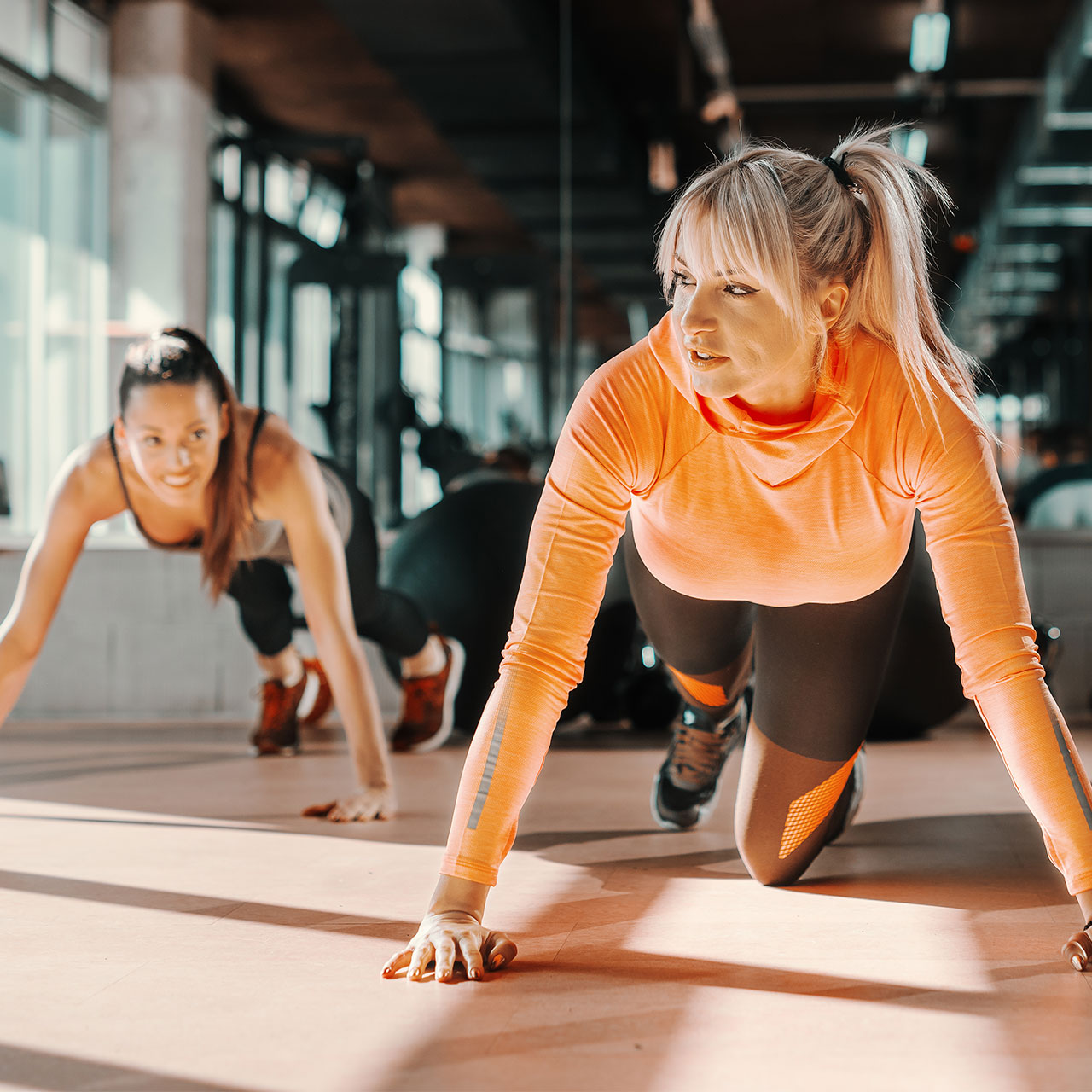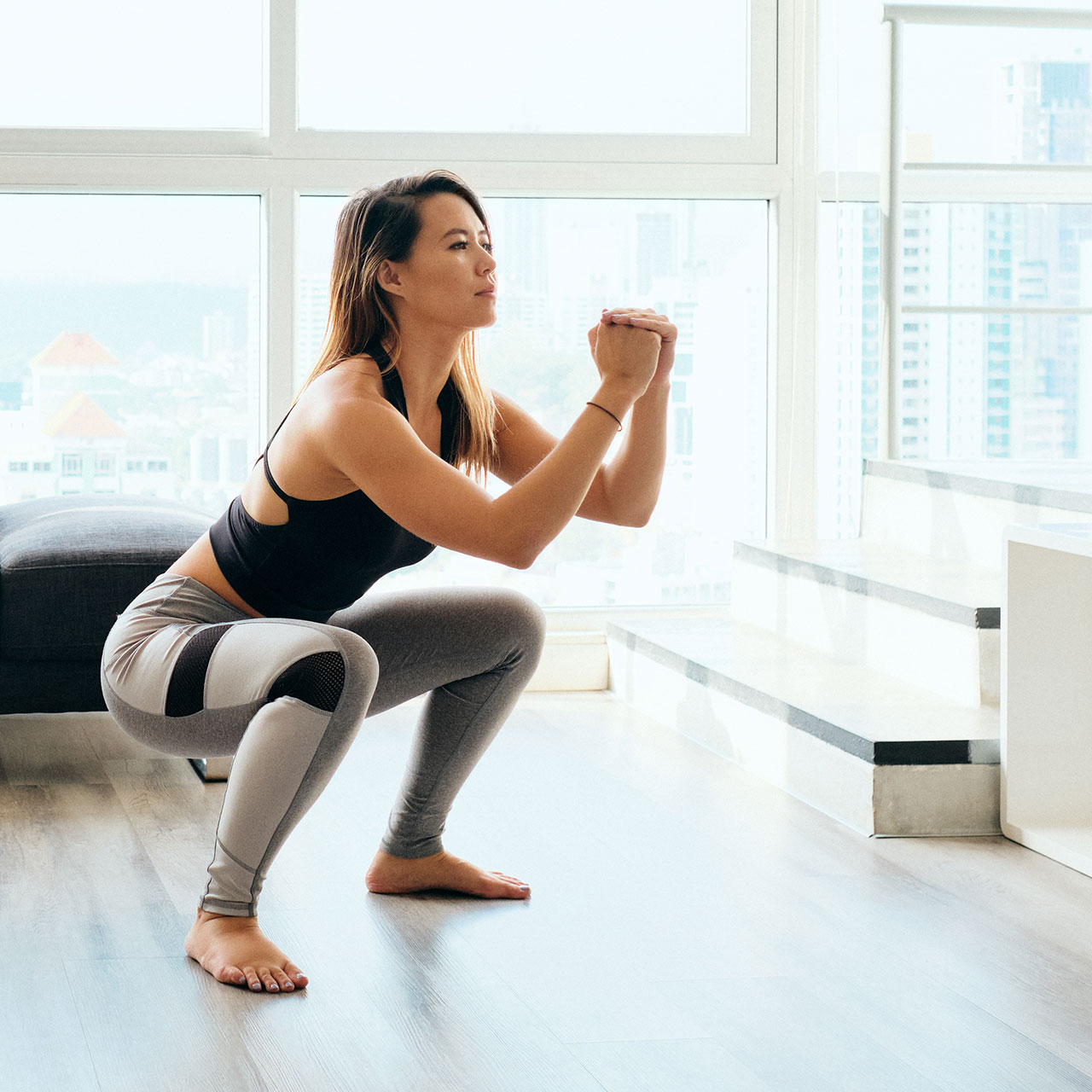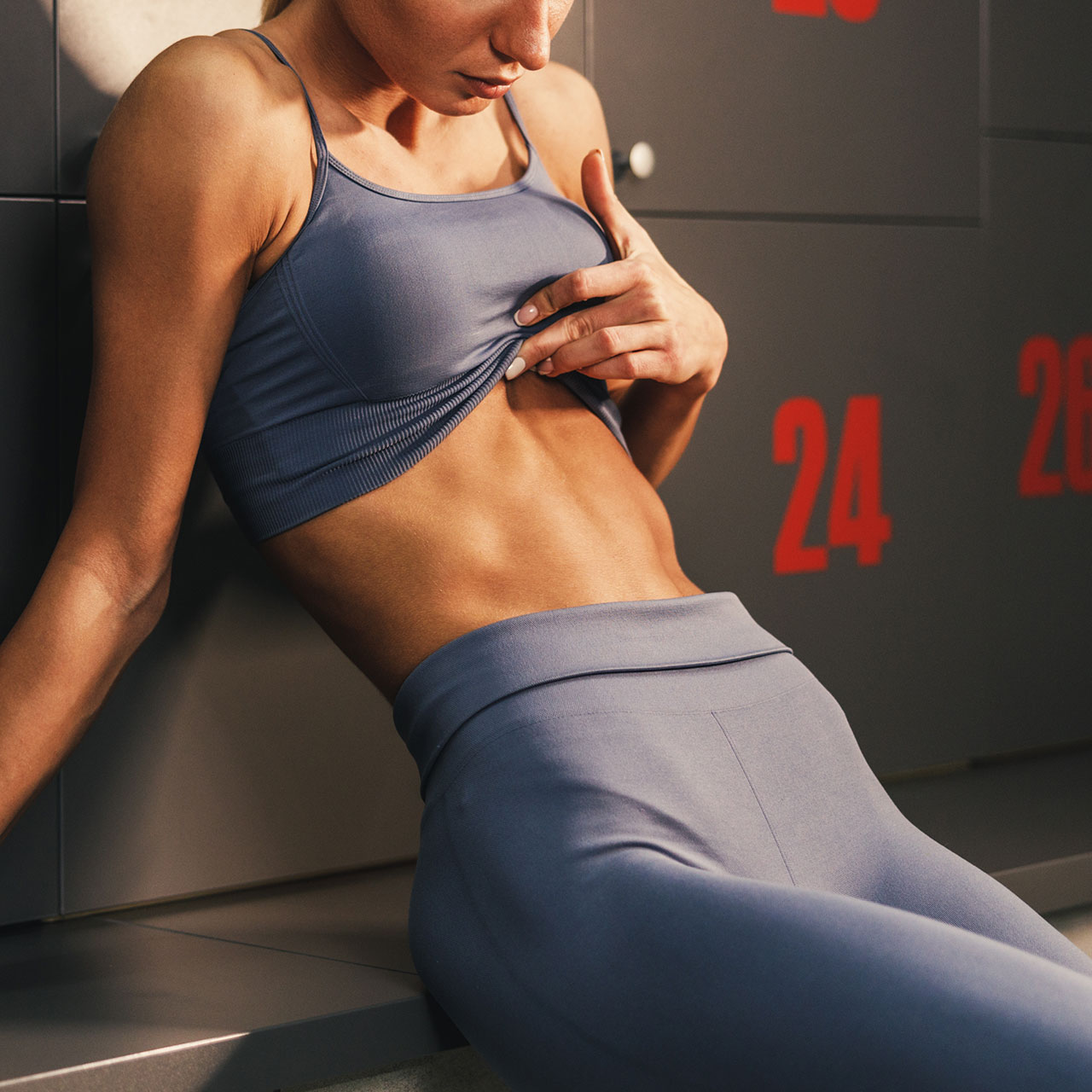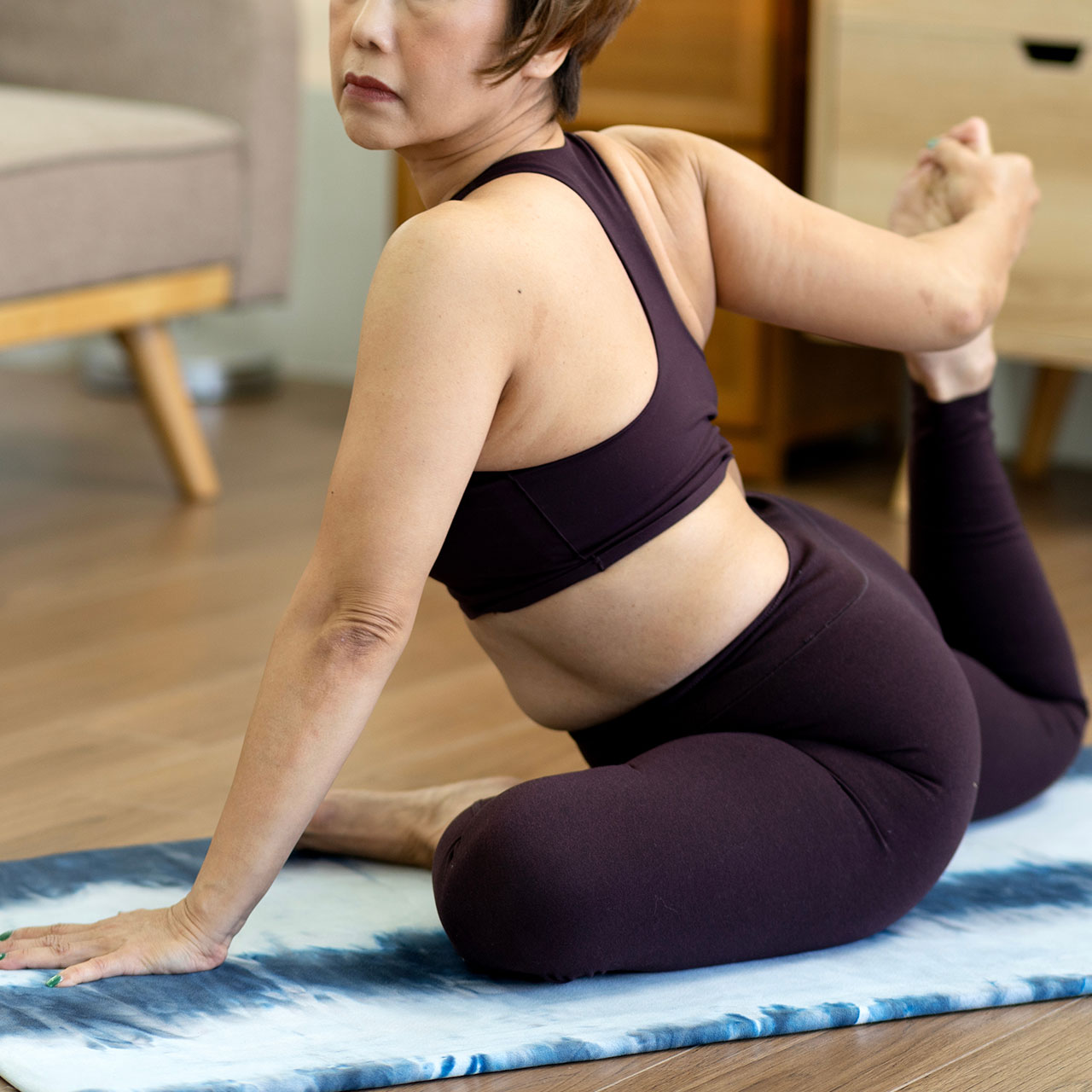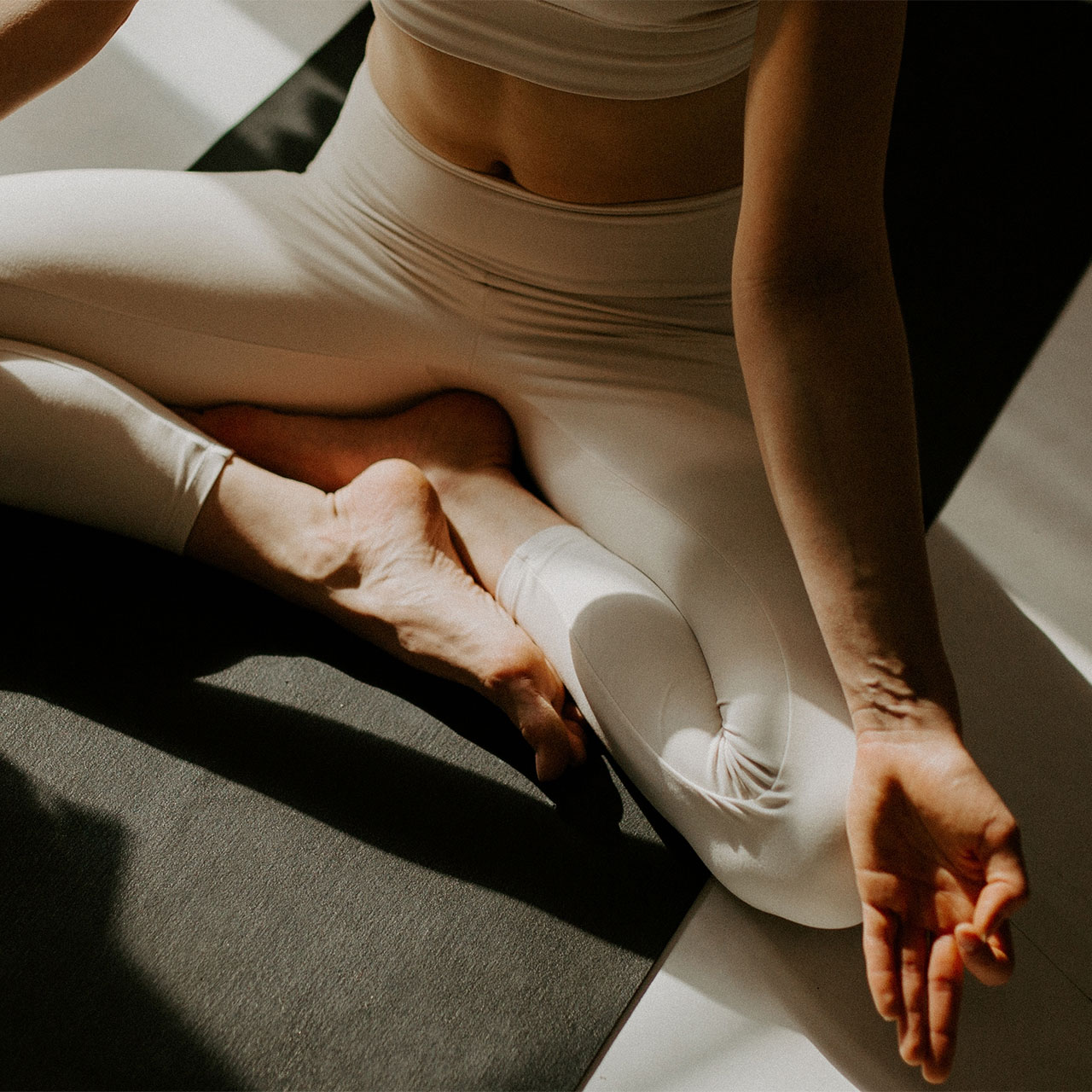Starting your day with quick morning exercises can be a game-changer, especially for those over 50 looking to maintain their health, tone muscles, and burn fat. As we age, maintaining muscle mass and a healthy metabolism become increasingly important. By incorporating some quick and effective morning exercises into your routine, you can enhance muscle tone, boost fat loss, and improve overall well-being, proving that it’s never too late to prioritize your health and fitness.
We checked in with Andrew White, NASM-certified personal trainer and co-founder of garagegympro.com; Victoria Petrella, NASM-certified personal trainer; and Mary Sabat, founder of BodyDesigns by Mary, to learn about nine simple exercises you can do each day to tone your muscles and shed fat over 50. They revealed that bodyweight squats, push-ups, plank holds, and many more are the ones to start incorporating. Read on to learn all nine exercises and why they can be so helpful.


1. Bodyweight Squats
Bodyweight squats primarily target the lower body, engaging the quadriceps, hamstrings, glutes, and calves. However, they also activate core muscles for stability and balance, providing a comprehensive workout that tones multiple muscle groups simultaneously.
White says, "Squats strengthen the entire lower body and core, improving one's ability to perform daily activities. This exercise increases muscle mass, which can help raise one's metabolic rate, aiding in fat loss."
Execution: Stand with your feet shoulder-width apart. Bend your knees and lower your hips as if sitting in a chair, keeping your chest up and knees over your toes. Push through your heels to return to the starting position. Do 2-3 sets of 10-15 reps.
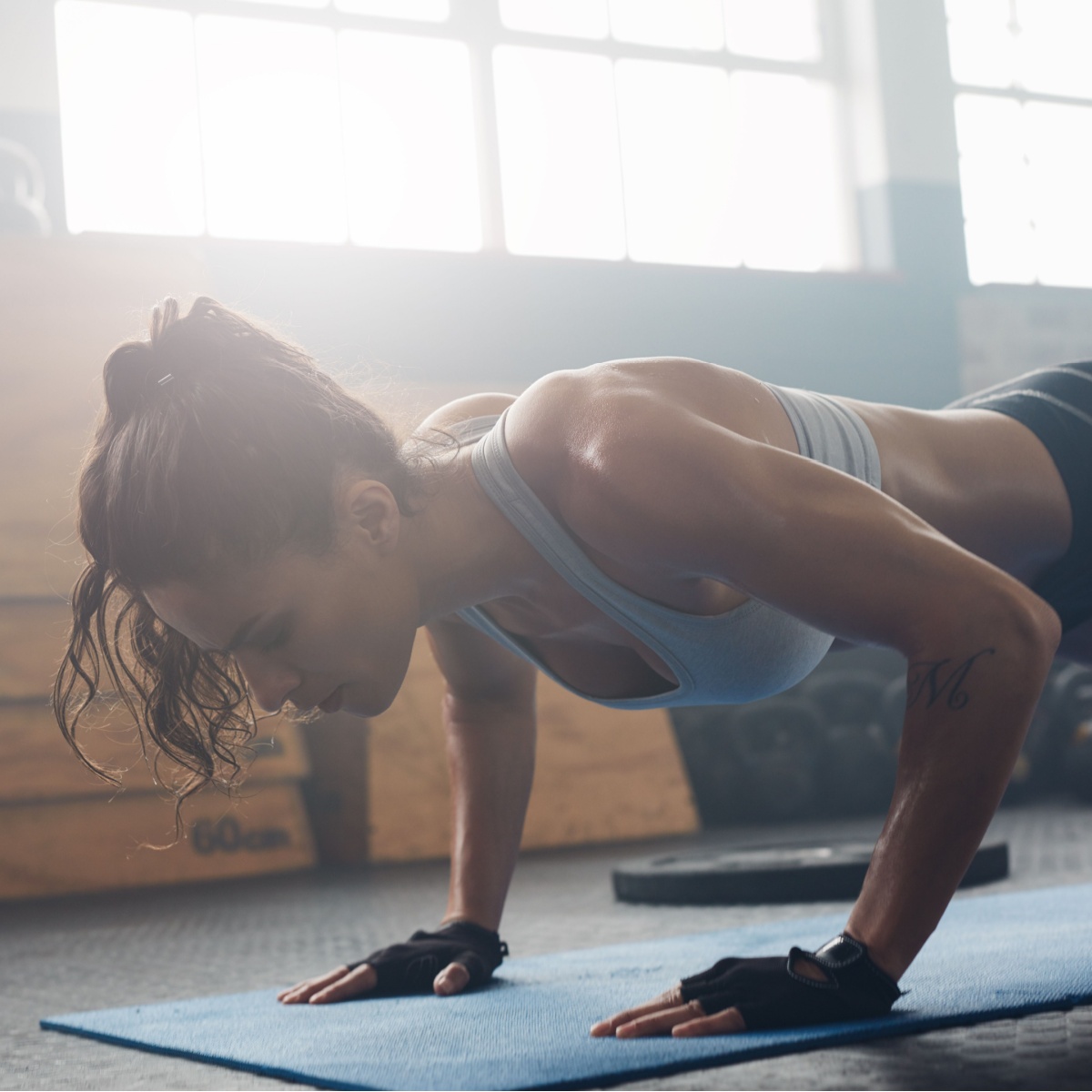
2. Push-Ups
Push-ups work multiple muscle groups simultaneously, including the chest (pectorals), shoulders (deltoids), triceps, and core muscles. This full-body engagement makes push-ups an efficient exercise for building muscle and improving overall strength.
"Push-ups strengthen the upper body and core. Maintaining muscle is key as you age, and push-ups help increase upper body strength and endurance, contributing to a higher metabolic rate," he says.
Execution: Begin in a plank position with your hands under your shoulders. Lower your body until your chest nearly touches the floor. Push yourself back up. Modify by dropping your knees to the floor if needed. Aim for 2-3 sets of 8-12 reps.
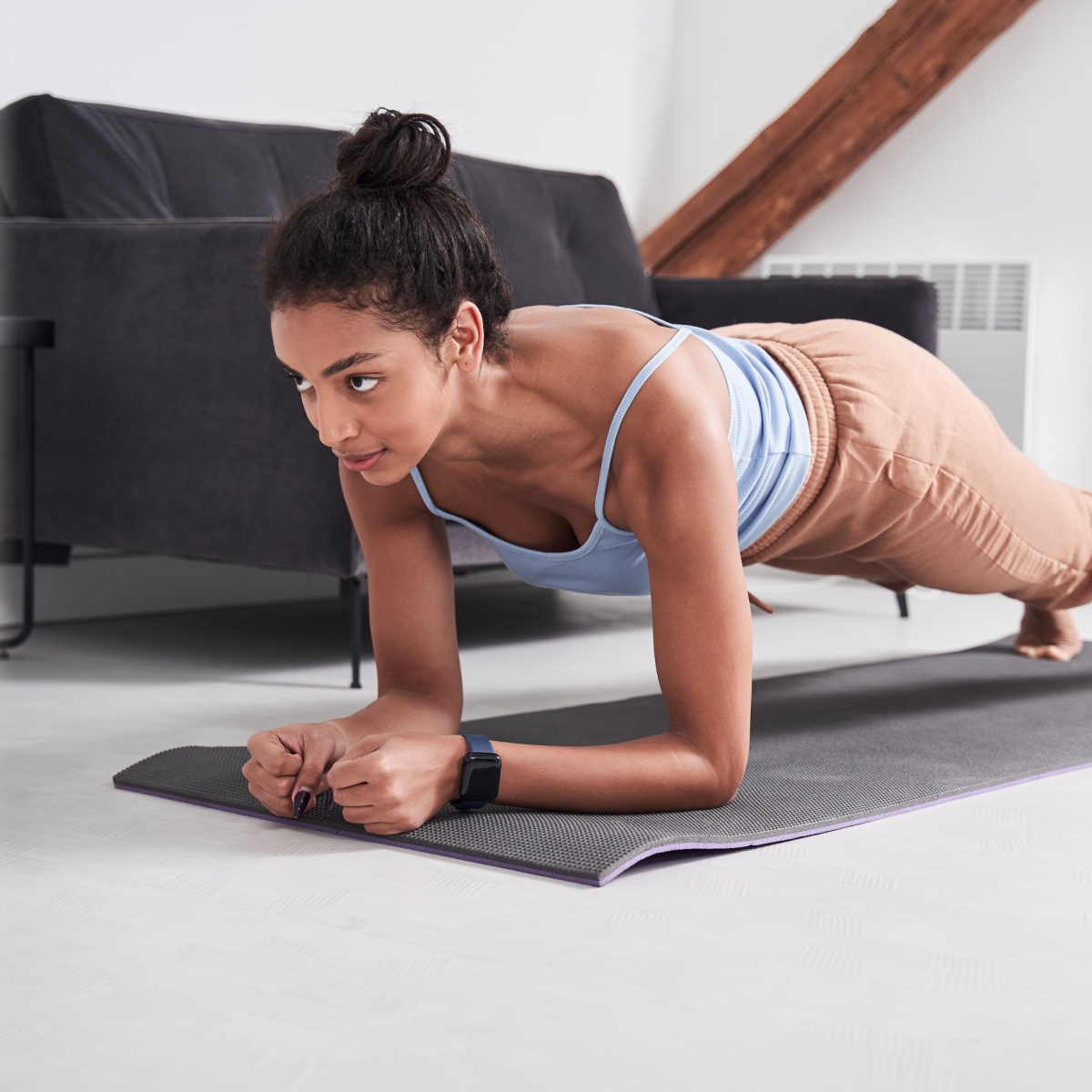
3. Plank Holds
While planks primarily target the core, they also engage other muscle groups, such as the shoulders, chest, back, and legs. This full-body workout helps to tone various muscles.
"This exercise strengthens the core, shoulders, and hips. A strong core improves posture, reduces back pain, and enhances balance, which is essential for maintaining functional independence as you age," White states.
Execution: Support your body on your elbows and toes, keeping your body in a straight line from shoulders to ankles. Engage your core and hold for 20-30 seconds. Repeat for 2-3 sets.
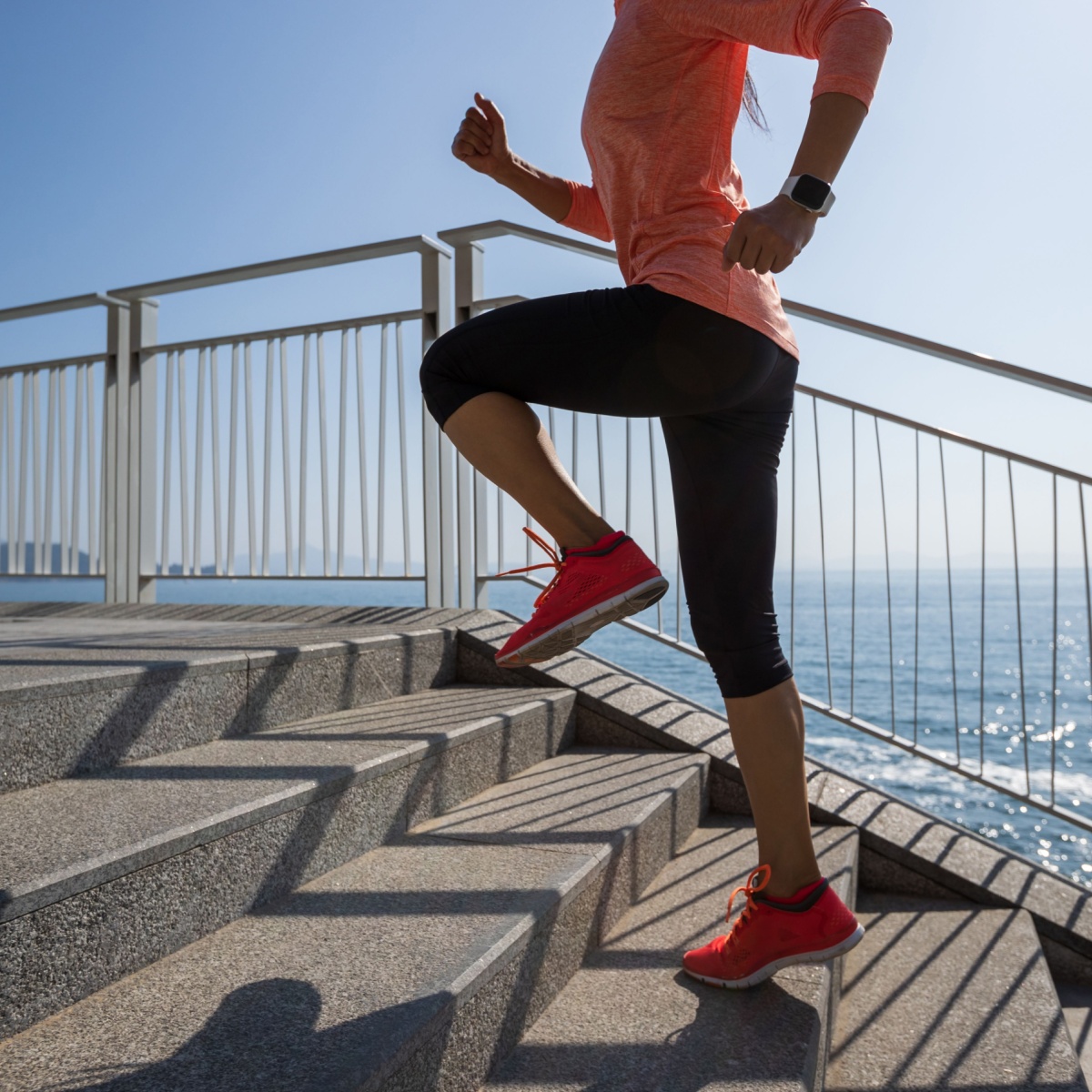
4. Step-Ups
Step-ups mimic activities such as walking up the stairs and stepping onto curbs, improving functional strength and mobility. This enhances the ability to perform daily tasks with ease and reduces the risk of falls and injuries. The repetitive motion of step-ups engages and tones the lower-body muscles. By using a higher platform or adding weights, you can increase the resistance, further enhancing muscle toning and strength.
"Step-ups target the legs and glutes and mimic everyday movements like climbing stairs. They also help improve balance and coordination, reducing the risk of falls," White notes.
Execution: Find a sturdy step or box. Place one foot on the step. Push through your heel to lift your body up, bringing the other foot to meet the first on the step. Step down with the leading leg and repeat. Do 10 repetitions on each leg for 2-3 sets.
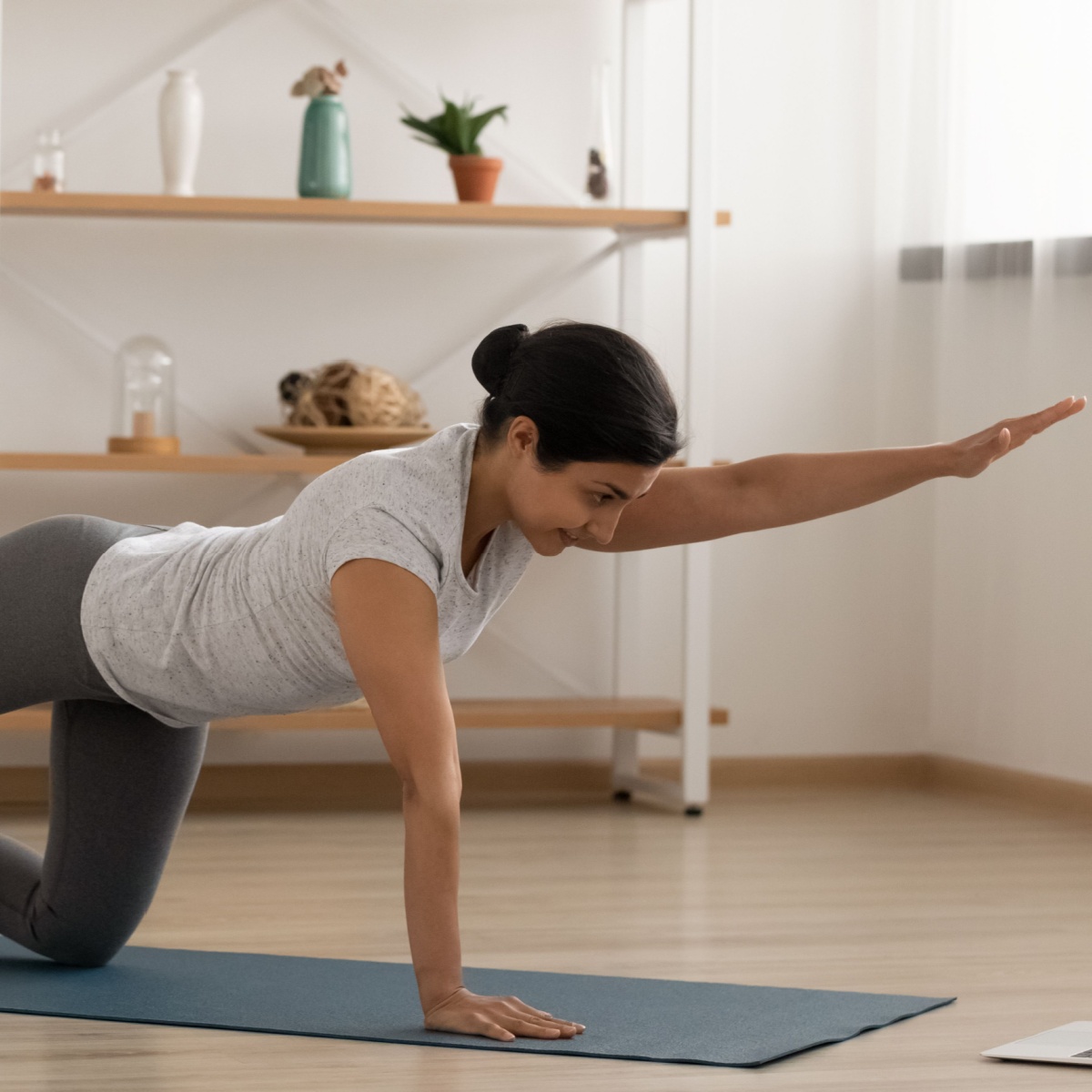
5. Bird-Dog
The bird-dog works the entire body. As you extend your arm and opposite leg, you activate the muscles in your shoulders, upper back, glutes, and legs. This comprehensive engagement helps tone multiple muscles. While the bird-dog exercise is primarily a strength and stability exercise, engaging multiple muscle groups can elevate the heart rate, providing a mild cardiovascular benefit. Building muscle mass through regular exercise also aids in fat loss over time.
"This exercise increases core strength and stability, improves coordination, and enhances muscular balance on both sides of the body, helping with overall mobility," White notes.
Execution: From all fours, extend one arm forward and the opposite leg back. Hold for a few seconds, then switch sides. Do 8-10 reps per side for 2-3 sets.
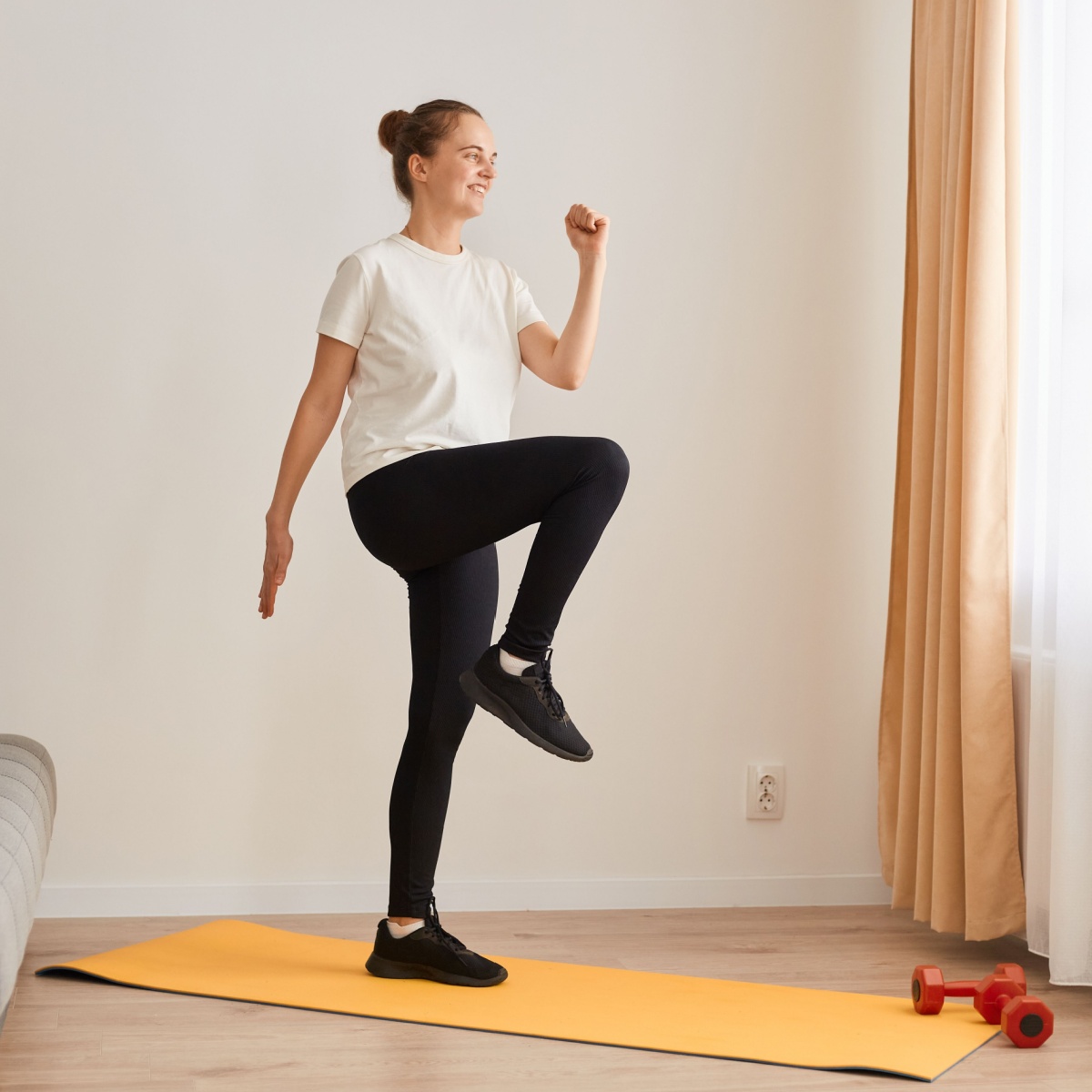
6. Walking or Marching in Place
Engaging in walking or marching in place can help burn calories, contributing to fat loss. The continuous movement boosts metabolism, and when combined with a balanced diet, it can effectively support weight management. Consistent movement helps tone these muscles, leading to improved muscle definition and strength.
"I love incorporating walking or marching in place to get the heart rate up. It’s low-impact but effective for burning calories and improving cardiovascular health," says Petrella.
Execution: Stand with your feet hip-width apart, back straight, and core engaged. Lift your knees to at least hip height with each step, swinging your arms naturally. Aim for at least 20-30 minutes of walking or marching in place per session. Start with shorter durations if needed, and gradually increase as your fitness level improves.
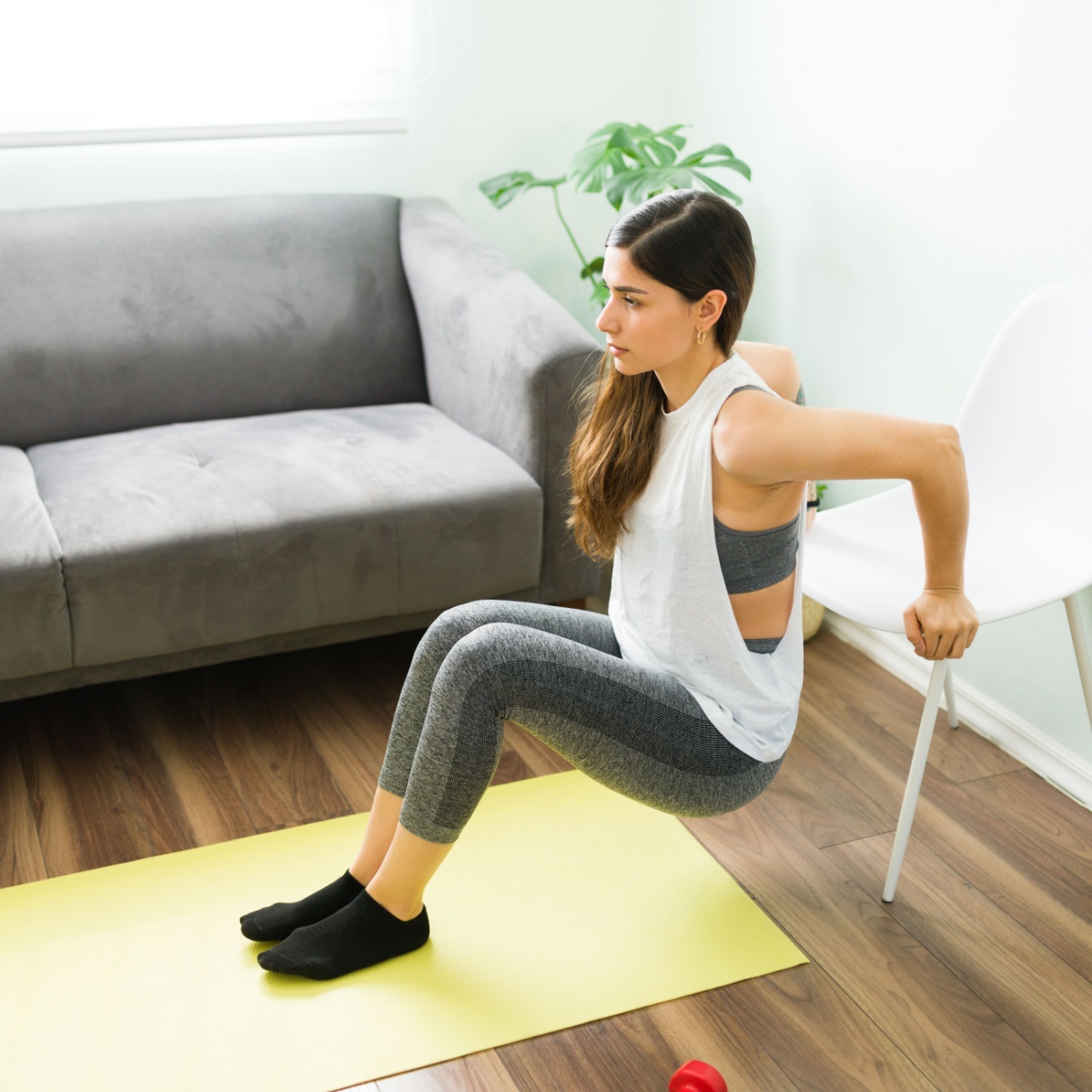
7. Chair Dips
While chair dips mainly target the upper body, they also require stabilization from the core muscles. Engaging the core helps improve abdominal strength and stability, which is crucial for overall functional fitness. Chair dips primarily work the triceps, the muscles located at the back of the upper arms. They also engage the shoulders, chest, and upper back.
"Chair dips target the triceps and help tone the back of the arms. I find using a sturdy chair and performing dips helps in maintaining upper body strength," Petrella says.
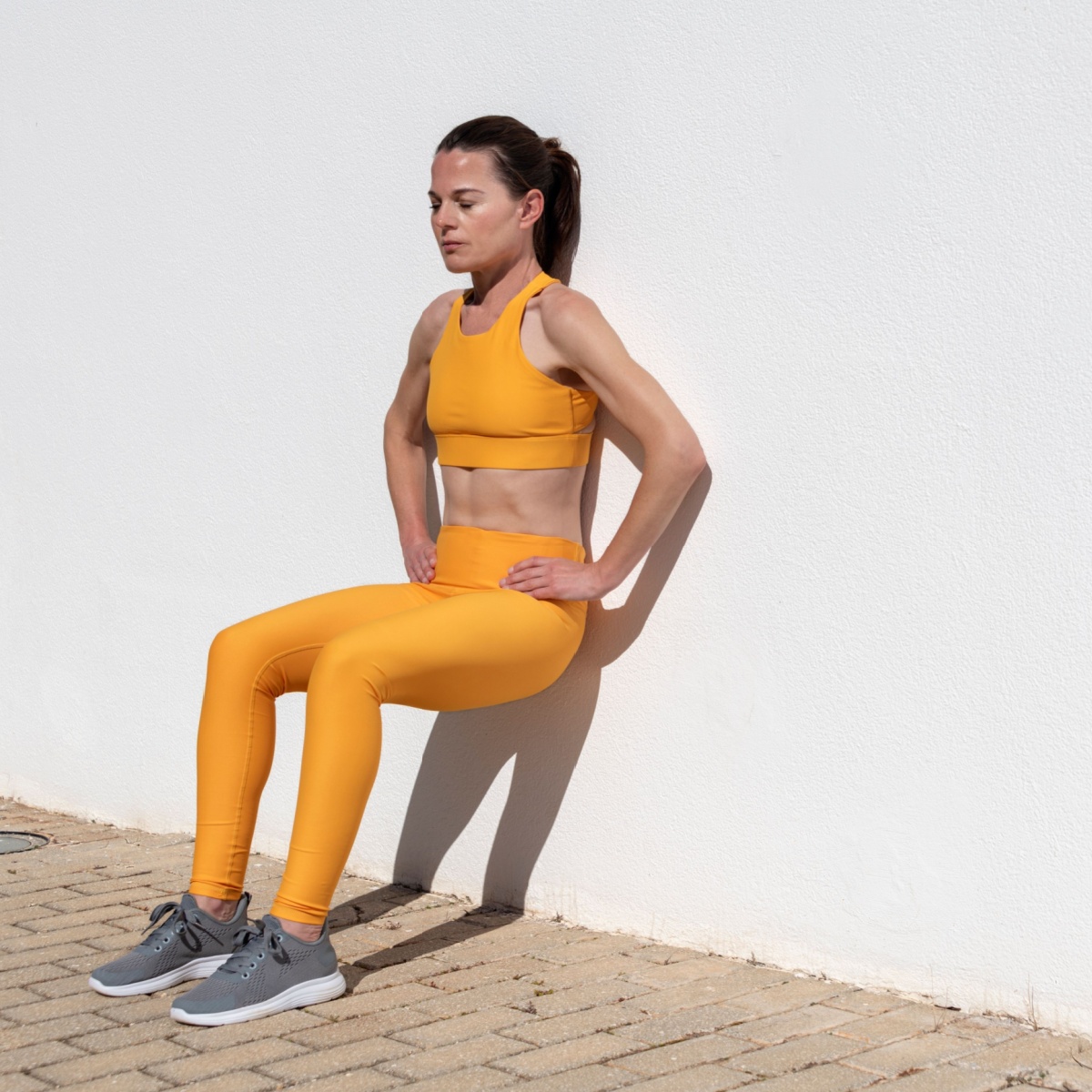
8. Regular Squats
"Regular squats" in a gym context often mean squats performed with additional weight, such as a barbell squat, instead of just bodyweight. This simple yet highly effective movement engages multiple muscle groups, including your quadriceps, hamstrings, glutes, and even your core. By incorporating squats into your routine, you not only strengthen these essential muscle groups but also boost your metabolism, which is crucial for fat loss.
"Squats target the large muscle groups of the lower body, like the quads and glutes. As you engage these major muscles, your body burns more calories, aiding in fat loss. As we age, maintaining muscle mass becomes crucial, and squats help in preserving and building that essential muscle," White says.
Execution: Set the barbell on a squat rack at shoulder height and position it evenly on your upper back. Grip the bar slightly wider than shoulder-width, lift it off the rack, and step back with feet shoulder-width apart and toes slightly outward. Begin by hinging at your hips and bending your knees, lowering yourself until your thighs are at least parallel to the ground. Ensure your knees track over your toes and keep your back neutral. Push through your heels to stand back up, exhaling as you rise. Maintain a tight core throughout the movement and perform each repetition in a controlled manner. Avoid common mistakes such as knee valgus, lifting your heels, and rounding your back. Start with lighter weights to perfect your form and consider using a spotter for heavier lifts.
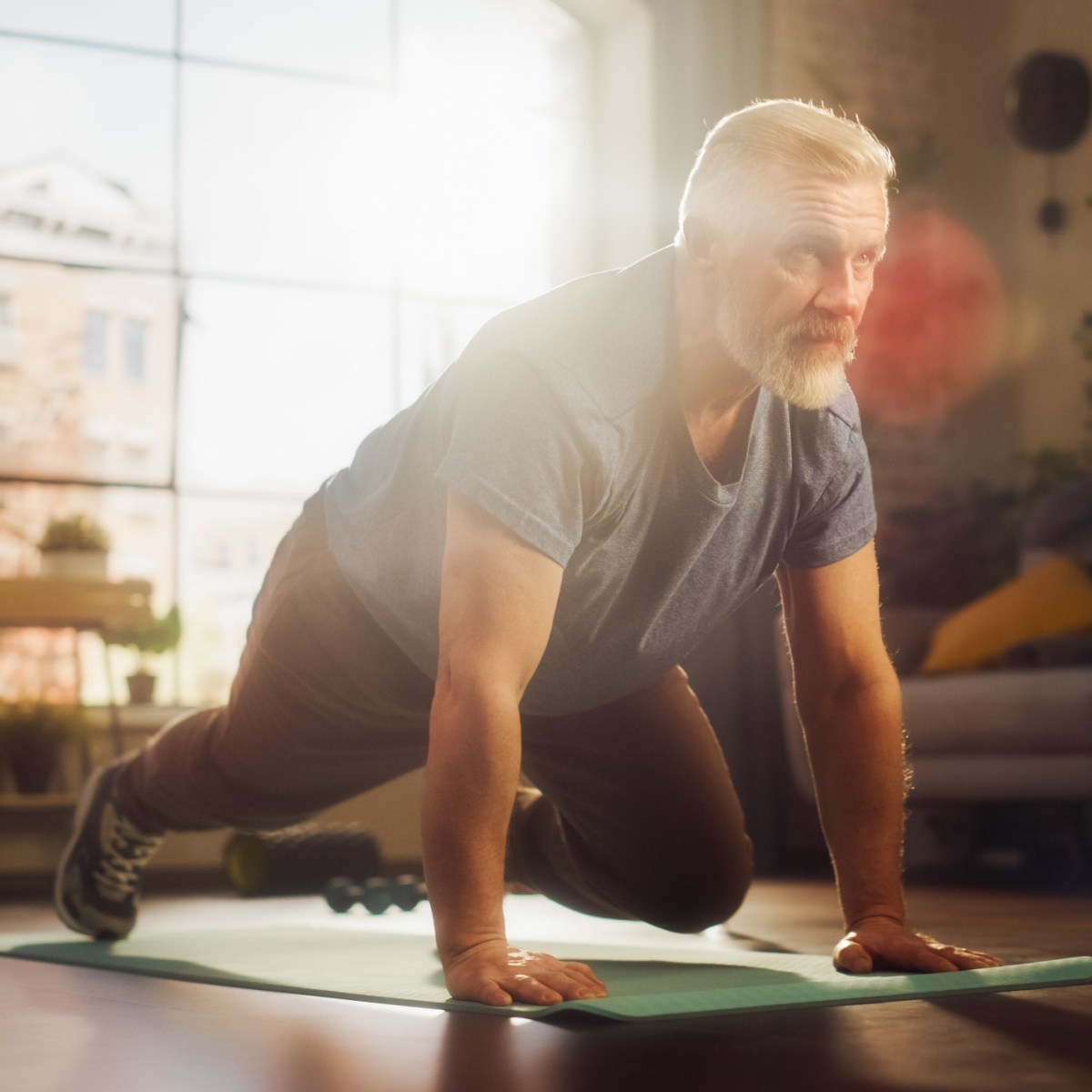
9. Mountain Climber
"The Mountain Climber is a core exercise that also engages the upper and lower body," Sabat explains. "Start in a plank position with your hands on the ground and your body in a straight line. Bring one knee towards your chest, keeping your body in a straight line, and then switch legs. Continue alternating legs as quickly as possible for several reps." As you perform the exercise, your shoulders, arms, and chest stabilize your upper body, while your core stabilizes the rest of your body. Before and after mountain climbing, be sure to stretch to reduce injury and fatigue.


